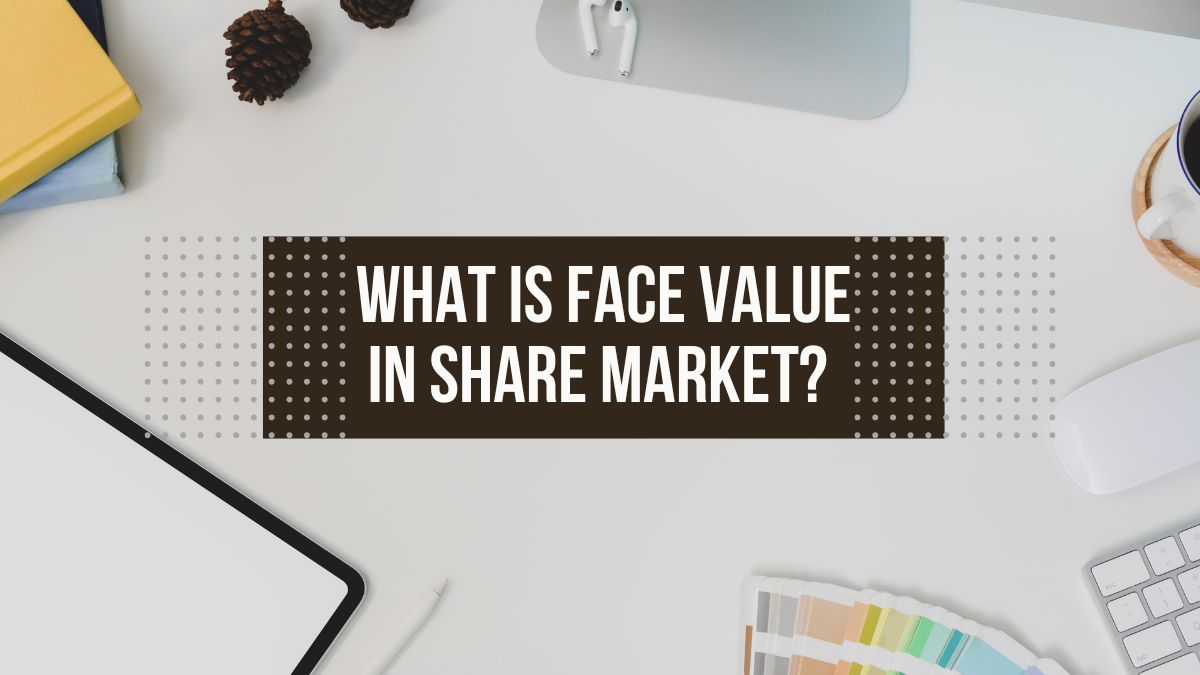The Face value, also known as par value, is the original price of a share or bond set by the issuing company. In the case of shares, it represents a fraction of the company’s share capital and has only a minimal impact on the market price, which is influenced by supply and demand. For bonds, it is the principal amount repaid at maturity.
While par value was important for dividends and stock splits in the past, its importance has diminished in favor of metrics such as book and market value. Investors today prefer market value in their decisions as it reflects market conditions and future earnings expectations.
Par value is an important concept for investors to understand. It’s often associated with bonds, but can also apply to shares. Here you can find out how it affects your investments:
What is Face Value in Share Market?

Face value is the original price of a share, which is quoted by the issuing company and stated on the certificate. It represents a small fraction of the company’s share capital. It is also known as the par value and determines the lowest possible price for the issue of a share.
An example: Tata Motors Limited
Face value: ₹2 per share
Current market price: ₹1028 per share
The shares of Tata Motors have a lower face value, which makes them cheaper to buy initially. The wide gap between the face value and the market price shows that investors have confidence in the company.
Formula of Face Value
The following formula explains how a company determines the Face value of its shares:
Face Value per Share = Equity Share Capital / Number of Equity Shares Issued
- Share capital: This is the total amount that a company generates by issuing shares.
- Number of shares issued: This is the total number of shares that the company has issued to the public.
What Does Face Value Mean in Bond Example?
The face value of a bond is the principal amount that the bond issuer promises to repay to the bondholder when the bond matures. It represents the loan amount that must be repaid after the term of the bond.
For example:
- Company: Suppose XYZ, a well-known company, decides to raise money by issuing bonds.
- Face value: Company XYZ sets the face value of each bond at ₹10,000.
- Coupon rate: The company offers an annual coupon rate (interest rate) of 6%.
- Maturity: The bonds have a maturity of 5 years.
Does Face Value of Stock Matter?
Although the par value of a share has certain significance, it is no longer as important as it used to be. Here is a summary of the reasons:
- Market price: the main driver of investment decisions is the market price of a share, which is driven by supply and demand. The face value of a share has little or no influence on its market value.
- Dividends: In the past, dividends were set as a percentage of par value, but most modern companies set dividends as a fixed amount per share.
- Book value: Par value plays a minor role in determining a company’s book value per share; however, it is less important than other financial data for investment analysis.
What is the Difference Between Face Value, Book Value, and Market Value?
| Characteristic | Face Value | Book Value | Market Value |
|---|---|---|---|
| Definition | The issuing company of a share lists its original price. | The net worth of a company is divided by the number of outstanding shares (Assets – Liabilities). | The current price at which a share can be bought or sold in the stock market. |
| Significance | Primarily historical. May be used for dividends and stock splits. | This is a measure of a company’s intrinsic value based on its balance sheet. | It reflects investor sentiment, expectations of future earnings, and overall market conditions. |
| Calculation | The company determines this at the time of issuance. | The formula is calculated as Total Assets – Total Liabilities / Number of outstanding shares. | The market is determined by supply and demand forces. |
| Stability | This will remain fixed unless the company performs a stock split. | This can change over time as the company’s assets and liabilities fluctuate. | The market is highly volatile and subject to frequent fluctuations. |
| Relevance to Investors | The decision-making process places limited importance on it. | Provides insights into the company’s underlying value. | This is a key factor in buying and selling decisions. |
Is Face Value the Same As Par Value?
Yes, the face value of an asset represents its value at the time of issue. The par value of a bond is the price paid at maturity by the company that issued the bond, often referred to as the “par value” Consequently, the issuer’s initial price for a share determines its par value.

